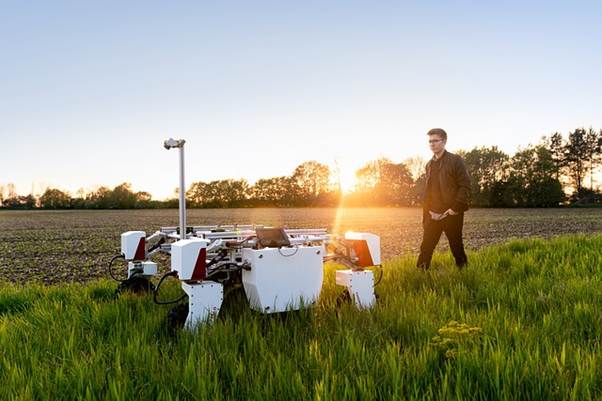In recent years, Robot integration has become one of the most influential trends shaping industries and societies worldwide. As robots transition from simple machines into intelligent collaborators, their presence is no longer limited to manufacturing floors or research labs. Today, robots work in healthcare, education, agriculture, logistics, and even households. By combining automation with artificial intelligence, Robot integration enhances efficiency, safety, and productivity while creating new opportunities for human-robot collaboration. This growing reliance on robotics is redefining how people live and work.

Understanding Robot Integration
Robot integration refers to the process of incorporating robotic systems into existing human activities, industries, and social structures. Unlike stand-alone automation, integration emphasizes collaboration between humans and robots, ensuring both strengths complement each other. Humans bring creativity, empathy, and strategic thinking, while robots offer precision, speed, and endurance. Successful Robot integration requires not only advanced technology but also thoughtful design that prioritizes usability, safety, and adaptability across diverse settings.
Robot Integration in Manufacturing
Manufacturing remains at the forefront of Robot integration, where robotics initially gained traction. Automated machines handle repetitive tasks such as assembly, welding, and packaging with unmatched accuracy. However, modern factories go beyond automation by integrating collaborative robots, or “cobots,” that work side by side with human employees. These robots reduce physical strain on workers while maintaining efficiency and quality. Through Robot integration, industries achieve higher productivity, fewer errors, and faster production cycles.
Healthcare Applications of Robot Integration
The healthcare sector has also embraced Robot integration to improve patient care and reduce medical risks. Surgical robots assist doctors in performing minimally invasive procedures, while robotic exoskeletons help patients in rehabilitation regain mobility. Robots are also used for delivering medications, monitoring patient vitals, and disinfecting hospital environments. By combining medical expertise with robotic precision, Robot integration enhances healthcare delivery, reduces human error, and creates safer environments for both patients and medical staff.
Education and Learning Through Robot Integration
In education, Robot integration has transformed the way students learn and teachers deliver knowledge. Robots act as interactive tutors, offering personalized lessons tailored to a student’s pace and abilities. They also engage learners in STEM subjects through hands-on demonstrations and coding exercises. Teachers benefit from reduced administrative burdens, enabling them to focus on fostering creativity and critical thinking. With Robot integration, classrooms become more interactive, preparing students for a technology-driven future.
Agriculture and Robot Integration
Agriculture is another area where Robot integration has shown immense potential. Farming robots assist in planting, harvesting, irrigation, and monitoring crop health. With climate change affecting agricultural patterns, robots help optimize resources like water and fertilizers while ensuring maximum yield. Farmers benefit from reduced labor costs and improved productivity. By integrating smart robotics into farming practices, Robot integration supports global food security while addressing sustainability challenges.

Business and Service Industry Integration
Beyond physical industries, Robot integration plays a significant role in business and services. Customer service robots handle inquiries, provide real-time assistance, and streamline operations in banks, airports, and hotels. Delivery robots are now common in logistics, ensuring faster and safer transportation of goods. In offices, robotic process automation (RPA) takes over repetitive digital tasks such as data entry and document processing. These advancements highlight how Robot integration reshapes business operations while enhancing efficiency and customer satisfaction.
Advantages of Robot Integration
The benefits of Robot integration extend far beyond efficiency. First, it reduces workplace hazards by assigning risky or physically demanding tasks to robots. Second, it boosts productivity by combining human creativity with robotic precision. Third, integration fosters innovation, enabling industries to develop new products and services. Additionally, Robot integration contributes to inclusivity, providing assistive technologies for individuals with disabilities or mobility challenges. By bridging human capabilities with advanced technology, integration empowers societies to achieve more.
Challenges of Robot Integration
Despite its advantages, Robot integration faces several challenges. High costs of advanced robots often limit accessibility for small businesses and developing regions. Training workers to adapt to robotics requires significant time and resources. Ethical questions also arise, particularly regarding job displacement and data privacy. Furthermore, ensuring safety in human-robot interactions remains a priority. Overcoming these barriers requires collaborative efforts between policymakers, industries, and researchers to ensure Robot integration benefits everyone equitably.
The Future of Robot Integration
Looking ahead, Robot integration will only deepen its impact across industries and daily life. With advancements in artificial intelligence, machine learning, and the Internet of Things (IoT), future robots will become more adaptive, emotionally intelligent, and collaborative. In smart cities, integrated robots may manage traffic systems, monitor public safety, and provide essential services. At home, robots could act as companions, caregivers, or assistants, blending seamlessly into human environments. The expansion of Robot integration promises a future where humans and robots thrive together.
Conclusion
In conclusion, Robot integration is more than just a technological advancement; it is a social and economic transformation. By weaving robots into healthcare, education, business, agriculture, and everyday life, societies are unlocking new levels of efficiency, creativity, and inclusivity. While challenges such as cost, ethics, and workforce adaptation persist, the potential of Robot integration is undeniable. As industries and communities continue to embrace these technologies, the future will be defined not by humans or robots alone but by the power of their collaboration.